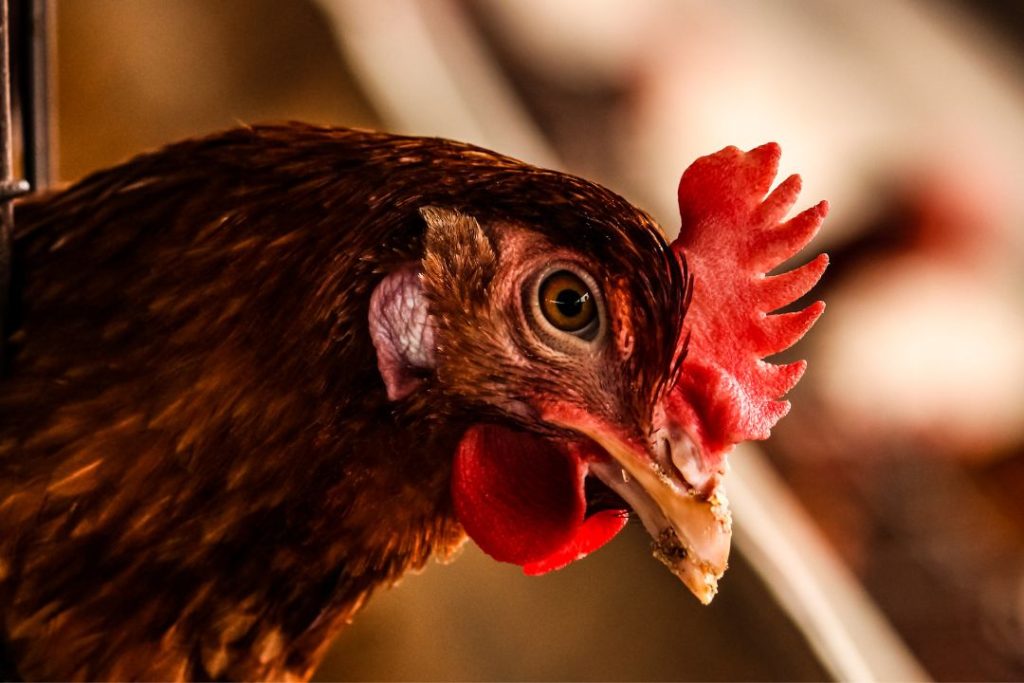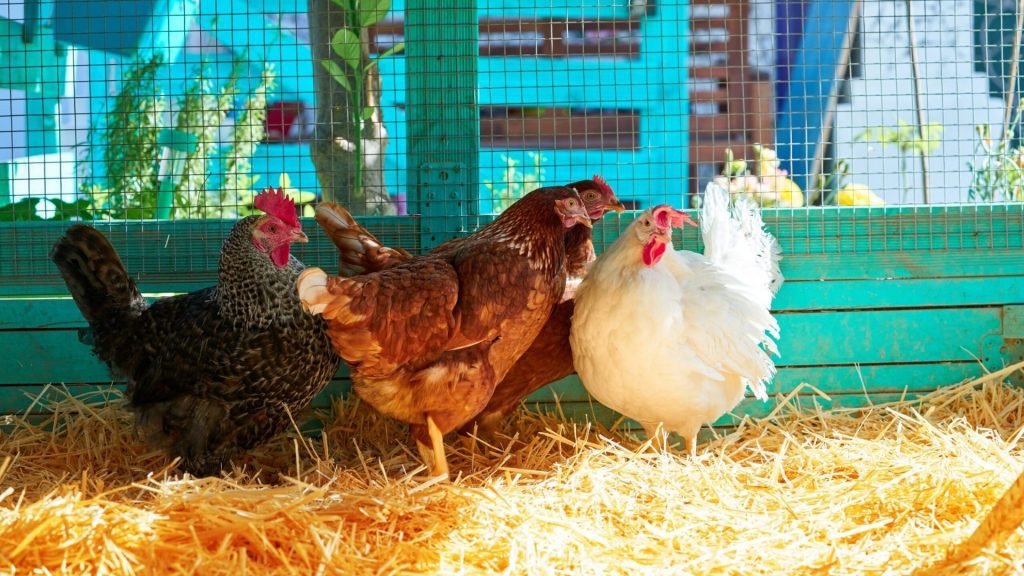Chickens are more than just farm animals; they are often beloved pets and valuable flock members. But what happens when your chicken suffers a broken beak?
A broken beak in a chicken is not just an aesthetic concern; it’s a painful injury that can affect eating, drinking, and overall well-being. But fear not; caring for your chicken with a broken beak is a manageable task with the right approach.
From providing soft foods and hand feeding to regular monitoring and weight checks, the path to recovery is paved with patience, understanding, and love.
Let’s delve deeper into how to care for a chicken with a broken beak. So without wasting time, start reading:
Anatomy of Your Chicken Beak
The beak is an essential part of your chicken’s anatomy, serving various functions such as eating, drinking, and grooming. Understanding its structure can help in proper care.
- Structure: Composed of two parts, upper and lower mandibles.
- Function: Used for packing food, drinking water, and preening feathers.
- Sensitivity: Contains nerves and blood vessels, making them sensitive to pain.
The chicken’s beak is a marvel of nature. Comprising both upper and lower mandibles, it’s a multifunctional tool. The upper mandible is often more mobile. The lower one provides stability. Together, they form a complex structure.
Two main parts make up the beak. Keratin, a protein, covers these parts. This protein is the same as found in human nails. Inside, blood vessels and nerves are present. These provide sensitivity to the beak.
Eating is a primary function of the beak. Chickens peck at their food. They use their beaks to tear it. Grains, insects, and plants are common foods. The beak’s design helps in consuming these.
Drinking is another vital function. Chickens don’t have lips. They fill their beaks with water. Then they tilt their heads back. The water flows down their throats. This process is fascinating to observe.
Preening is an essential grooming activity. Chickens use their beaks for this. They clean their feathers. They remove dirt and parasites. A healthy beak is crucial for this process.
Sensitivity in the beak is due to nerves. Chickens feel with their beaks. They explore their environment. A sensitive beak helps them understand the world.
More Information
The beak’s structure is not uniform. Different breeds have different beaks. Some are thick and strong. Others are slender and sharp. Each type serves a specific purpose.
Injuries to the beak can be severe. The blood vessels can bleed profusely. Immediate care is often required. A broken beak can be painful. Proper understanding helps in effective treatment.
Chickens also use their beaks for communication. They peck to establish hierarchy. A peck can mean different things. Observing this behavior is insightful.
The beak’s growth is continuous. Chickens wear it down naturally. Pecking at hard objects helps. Sometimes, human intervention is needed. Careful trimming might be necessary.
In conclusion, the chicken’s beak is multifaceted. It’s more than just a tool for eating. It’s a vital organ, complex and sensitive. Understanding your chicken’s anatomy aids in proper care. Appreciating its functions adds to our respect for these incredible birds.
How A Broken Beak Affects A Chicken?
A broken beak is no small matter for a chicken. This injury can have profound effects on their daily life. Let’s explore the impact in detail:
1. Eating Difficulties
A chicken’s beak is its primary eating tool. Break it, and problems arise. Picking up food becomes a challenge. Grains slip through the cracks. Insects become elusive prey. Even drinking water becomes a struggle.
Feeding adjustments are often required. Soft foods become a necessity. Hand feeding might be needed. Weight loss can occur. Monitoring the chicken’s diet is essential. A broken beak can lead to malnutrition. Proper care ensures the chicken stays nourished.
2. Pain and Discomfort
Imagine a constant toothache. That’s what a broken beak feels like. The nerves are exposed. Every touch can be painful. The chicken may become irritable. Its behavior might change.
Comfort becomes a priority. Gentle handling is required. Pain management might be necessary. A veterinarian can prescribe medication. Regular checks for healing are vital. Patience and understanding from the caregiver are key.
A chicken’s beak is sensitive. A break affects more than eating. Grooming becomes painful. Social interactions may change. The chicken might withdraw from the flock. Emotional support becomes as important as physical care.
3. Potential Infections
A broken beak opens the door to infections. Bacteria can enter the wound. Infections can spread quickly. Immediate cleaning is crucial. Antibiotic ointments may be needed. Regular monitoring for signs of infection is essential.
Infections can lead to complications. The beak might not heal properly. Further medical intervention might be required. Veterinary care has become crucial. Following the vet’s instructions is non-negotiable. Prevention is always better than cure.
Infections aren’t just a physical problem. They can lead to behavioral changes. The chicken might become lethargic. It may stop eating altogether. Early detection of infections is key. Timely treatment can prevent serious consequences.
A broken beak is more than a simple injury. It affects a chicken’s entire life. Eating, drinking, grooming, socializing – all are impacted. Proper care is not just advisable; it’s essential.
Understanding the effects helps in care. Knowing what to expect prepares you. Compassion, patience, and knowledge are your tools. With them, you can help your chicken heal.
A broken beak is a journey. It’s a test of your bond with your chicken. But with the right approach, it’s a journey you can complete together. Your chicken depends on you. Your care can make all the difference.
How to Care For A Chicken with A Broken Beak?
A broken beak is a serious concern for chicken owners. Immediate care is vital. Here’s a comprehensive guide to help you through this stressful situation:
1. Assessing the Damage
First things first, assess the damage. Knowing what you’re dealing with is crucial.
- Check for Bleeding: Blood can be a frightening sight. Don’t panic. Apply gentle pressure with a clean cloth. Hold until the bleeding stops. Stay calm; your chicken needs you.
- Determine the Break: A crack or a complete break? Each requires different care. A crack might heal on its own. A complete break needs more attention. Understanding the injury helps in treatment.
- Look for Other Injuries: A broken beak might not be the only problem. Check the chicken’s body. Look for cuts, bruises, or other injuries. A thorough examination ensures proper care.
2. Providing First Aid
Providing first aid to your chicken is the first step of immediate care. You need to do the following:
- Clean the Area: Hygiene is paramount. Use a soft cloth. Dampen it with a saline solution. Gently clean the broken beak. Be gentle; remember, it’s a sensitive area.
- Apply Antibiotic Ointment: Infections can complicate matters. Prevent them with antibiotic ointment. Apply a thin layer. Focus on the broken area. Follow the instructions on the packaging.
- Secure the Beak if Necessary: A severely broken beak may need alignment. This is a delicate task. Consult a vet if possible. If not, use soft bandaging to secure it. Follow online guides from reputable sources.
A broken beak is a challenge, both for you and your chicken. Immediate care is not just about fixing the break. It’s about compassion, understanding, and patience.
Your chicken looks to you for help. Your calm demeanor reassures it. Your gentle touch comforts it. Your knowledge heals it.
Remember, a broken beak is not the end. With proper care, healing is possible. Your chicken can recover fully. It can return to pecking, clucking, and being its usual self.
You’re not just a chicken owner. You’re a caregiver, a healer, a friend. In times of injury, that’s what your chicken needs you to be. With this guide, you have the tools to be just that.
How To Take Long-Term Care and Healing For Your Chicken’s Broken Beak?
A broken beak is a complex injury that requires meticulous care. Here’s a comprehensive guide to long-term care and healing:
1. Feeding Adjustments
Properly feeding your chicken is crucial to take care of them. To make the necessary feeding adjustments do the following:
- Soft Foods: Hard foods are a no-go. Soft, mashed, or wet foods are essential. Cooked grains work well. Soft fruits and vegetables are ideal. Experimentation might be necessary. Your chicken’s preferences may change.
- Hand Feeding: Some chickens need more help. Hand feeding can be a solution. Use a spoon, syringe, or fingers. Be gentle and patient. Your chicken may resist at first. Persistence and kindness are key.
- Monitor Weight: Regular weight checks are vital. A kitchen scale can work. Keep a record of the weight. Compare to healthy weight ranges. Consult a vet if concerns arise. Weight loss can indicate other problems.
Feeding is more than just nutrition. It’s an emotional process. Your chicken might feel vulnerable. Offer comfort, encouragement, and companionship. Make mealtime enjoyable. Your presence can make a difference.
2. Monitoring the Healing Process
Healing is a journey. Regular monitoring ensures success. Here’s what to do:
- Daily Checks: Check the beak daily. Look for healing signs. Note any complications. Changes in color or texture are important. A journal can be helpful. Photos might be useful too. Consistency ensures proper monitoring.
- Vet Visits: Regular vet visits are non-negotiable. Schedule them in advance. Follow the vet’s advice diligently. Ask questions if needed. Your vet is a valuable resource. Utilize their expertise fully.
- Patience and Care: Healing takes time and patience. Comfort and support are essential. Talk, sing, or just be with your chicken. Offer favourite treats. Understand that setbacks might occur. Stay positive and supportive.
3. Additional Considerations
Long-term care is multifaceted. Here are more considerations:
- Environment: Safety and comfort are paramount. Keep the chicken indoors if needed. Ensure warmth. Avoid stressors like other pets or loud noises. A calm environment promotes healing.
- Social Interaction: Monitor social interactions. A broken beak can affect behaviour. Watch how your chicken interacts with the flock. Separate if needed. Controlled social interactions can be beneficial.
- Mental Health: Mental well-being is crucial. Watch for depression signs. Engage your chicken in activities. Toys and stimulation can help. Mental healing complements physical healing.
- Prevention: Prevention is a long-term strategy. Identify the cause of the break. Take preventive measures. Educate yourself and others. A proactive approach prevents future injuries.
Caring for a chicken with a broken beak is a profound responsibility. It’s a test of understanding, compassion, patience, and resilience. It’s a journey that you and your chicken embark on together.
Conclusion
A broken beak is not just a physical injury. It’s an emotional journey. It’s an opportunity to deepen your bond with your chicken. Embrace that opportunity, and both you and your chicken will emerge stronger.
Knowing how to care for a chicken with a broken beak is not just about immediate care. It’s about providing ongoing support and compassion. The bond between a chicken and its caregiver is unique and special.



